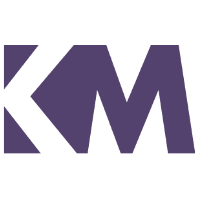Introduction
Influencer marketing is a powerful tool that can take your brand to new heights. But let’s be real—it can also be a drain on your resources if you don’t approach it with a solid strategy. Especially for startups and small businesses in Kenya, getting the most bang for your buck is crucial. The good news? You don’t need a massive budget to see impactful results. In this article, we’ll walk you through how to budget for influencer marketing effectively without breaking the bank. We’ll also sprinkle in some Kenyan industry stats to give you local context and insight.
Kenyan Industry Stats
- Influencer marketing in Kenya is projected to grow by 15% annually over the next five years, indicating an increasing reliance on digital influencers by local brands.
- Micro and nano influencers in Kenya see an average engagement rate of 7.6%, higher than global averages, making them a cost-effective choice for brands.
- Around 68% of Kenyan consumers trust product recommendations from influencers, compared to 51% who trust brand advertisements.
- Instagram is the most popular platform for influencer marketing in Kenya, with over 75% of influencer campaigns executed on the platform.
- The average cost of a single Instagram post from a micro-influencer in Kenya is KES 15,000, making it accessible for small to medium-sized businesses.
Understanding the Costs of Influencer Marketing
Types of Influencers and Their Costs
Before setting a budget, it’s essential to understand the different types of influencers and the costs associated with them. Influencers generally fall into four categories:
- Mega-Influencers: These are celebrities or social media stars with millions of followers. They have a broad reach but come with hefty price tags. In Kenya, a mega-influencer can charge upwards of KSh 500,000 per post.
- Macro-Influencers: These influencers typically have between 100,000 and 1 million followers. They offer a balance between reach and affordability, with costs ranging from KSh 100,000 to KSh 500,000 per post, depending on the platform and engagement.
- Micro-Influencers: Micro-influencers have a smaller, more engaged following (usually between 10,000 and 100,000 followers). They are often seen as more authentic and relatable, making them a popular choice for brands with smaller budgets. The cost per post in Kenya ranges from KSh 10,000 to KSh 100,000.
- Nano-Influencers: These are individuals with fewer than 10,000 followers but with a highly engaged, niche audience. They are the most affordable, often charging less than KSh 10,000 per post. Their influence is powerful within specific communities, making them a cost-effective option.
Key Factors Influencing Costs
When planning your influencer marketing budget, consider the following factors:
- Content Creation: The type of content an influencer creates (e.g., videos, images, blog posts) significantly impacts the cost. High-quality video content generally costs more than a simple Instagram post.
- Campaign Duration: Long-term partnerships usually come at a discounted rate compared to one-off posts. If you plan to run a campaign over several months, you might negotiate a better deal.
- Platform Choice: The social media platform used can also affect costs. For example, Instagram and YouTube tend to be more expensive than Twitter or TikTok due to their visual nature and the effort required in content creation.
- Engagement Rates: Influencers with higher engagement rates (likes, comments, shares) often charge more. However, investing in influencers with high engagement can lead to better ROI, making it a worthwhile consideration.
Setting a Realistic Budget for Influencer Marketing
Aligning Marketing Goals with Budget
The first step in setting a budget is to clearly define your marketing goals. Are you aiming for brand awareness, lead generation, or direct sales? Your objectives will determine the type of influencers you should work with and how much you should allocate to your campaign.
For example, if you’re launching a new product and want to create buzz, partnering with a few micro-influencers who can generate authentic conversations might be more effective and affordable than investing in one mega-influencer.
Research and Benchmarking
Understanding the market rates and what your competitors are spending is crucial. In Kenya, influencer marketing is growing rapidly, with 75% of companies reporting plans to increase their influencer marketing budget in 2024. However, this doesn’t mean you need to spend a fortune. By researching what similar brands are doing, you can set a budget that is competitive yet within your means.
Budget Allocation Strategies
Here are a few strategies to consider when allocating your budget:
Percentage of Marketing Budget:
Allocate a specific percentage of your overall marketing budget to influencer marketing. For example, if you have a KES 1 million marketing budget, you might allocate 10-20% to influencer campaigns.
Fixed Budget:
If you prefer more control, set a fixed amount for your influencer marketing efforts. This approach ensures you don’t overspend and can help you evaluate the ROI more easily.
Flexible Budgeting:
Be prepared to adjust your budget based on campaign performance. If an influencer delivers excellent results, consider increasing their budget for future campaigns.
Maximizing ROI with Smart Spending
Once you’ve set your budget, the next step is to ensure you’re spending it wisely. Here’s how you can maximize your ROI.
Choosing the Right Influencers
Selecting the right influencers is critical to the success of your campaign. Here are a few tips:
Audience Fit:
Ensure the influencer’s audience aligns with your target market. For instance, if you’re targeting young urban professionals, an influencer who resonates with this demographic is a good match.
Engagement Over Follower Count:
Don’t be swayed by high follower counts. Instead, focus on engagement rates. An influencer with 20,000 followers and a 10% engagement rate is often more valuable than one with 100,000 followers and a 1% engagement rate.
Authenticity and Credibility:
Consumers are becoming more discerning and can spot inauthentic endorsements a mile away. Choose influencers who genuinely align with your brand values and who can speak about your product or service with credibility.
Negotiating Deals and Partnerships
Smart negotiation can help you stretch your budget further. Here are some ideas:
Barter Deals:
Offer products or services in exchange for promotion. This can be particularly effective if the influencer is genuinely interested in your offerings.
Commission-Based Partnerships:
Consider performance-based partnerships where influencers earn a commission on sales or leads they generate. This approach can reduce upfront costs and aligns the influencer’s success with your business goals.
Long-Term Collaborations:
Building ongoing relationships with influencers can be more cost-effective in the long run. Long-term partnerships also allow influencers to become more familiar with your brand, which can lead to more authentic and impactful content.
Leveraging Micro and Nano Influencers
As mentioned earlier, micro and nano influencers often offer higher engagement rates at a fraction of the cost. These influencers are especially powerful for niche markets. Consider partnering with several micro or nano influencers instead of a single macro influencer. This strategy can help you reach a more diverse audience and increase your campaign’s overall effectiveness.
Tracking and Measuring Success
No marketing campaign is complete without tracking and measurement. It’s crucial to understand how well your influencer marketing efforts are performing so you can make data-driven decisions in the future.
Setting KPIs and Metrics
Before launching your campaign, establish key performance indicators (KPIs) that align with your marketing goals. Common KPIs include:
- Engagement Rate: Likes, comments, shares, and overall interaction with the content.
- Reach: The number of people who saw the influencer’s content.
- Conversion Rate: The percentage of people who took the desired action (e.g., signing up for a newsletter, making a purchase).
- Click-Through Rate (CTR): The percentage of people who clicked on a link provided by the influencer.
Tools and Technologies for Measurement
Use tools to track and measure the success of your campaigns. Here are some popular ones:
- Google Analytics: Track referral traffic from influencers to your website and measure conversions.
- Social Media Insights: Use built-in analytics on platforms like Instagram and Facebook to measure engagement and reach.
- Influencer Marketing Platforms: Tools like Upfluence and AspireIQ can help track the performance of individual influencers and campaigns.
Analyzing ROI
Calculate your return on investment (ROI) by comparing the revenue generated from the campaign against the cost. If the ROI is lower than expected, analyze the data to identify potential areas for improvement. Perhaps a different influencer or a new approach might yield better results.
Common Budgeting Mistakes to Avoid
Even with the best intentions, it’s easy to make mistakes when budgeting for influencer marketing. Here are some common pitfalls and how to avoid them:
Overpaying for Influencers
It’s easy to get caught up in the hype and overpay for big-name influencers. Always do your research and don’t be afraid to negotiate. Remember, engagement and audience fit are often more valuable than sheer follower count.
Ignoring Micro and Nano Influencers
Don’t underestimate the power of smaller influencers. They might not have millions of followers, but their audiences are often more engaged and loyal. Plus, they’re more likely to accept barter deals or commission-based partnerships, which can save you money.
Neglecting ROI Tracking
Without proper tracking, you’re essentially flying blind. Always measure the success of your campaigns and adjust your budget and strategy accordingly. Use the tools and KPIs mentioned earlier to ensure you’re getting the most out of your investment.
Conclusion
Influencer marketing in Kenya offers a wealth of opportunities for brands looking to connect with their target audience. With the right strategy, you can maximize your ROI without breaking the bank. By understanding the costs, setting a realistic budget, choosing the right influencers, and tracking your success, you’ll be well on your way to achieving your marketing goals.
Ready to take your influencer marketing to the next level? At Kwetu Marketing Agency, we specialize in crafting influencer marketing strategies that align with your budget and business goals. Whether you’re a startup or an established brand, our team can help you navigate the ever-evolving world of digital marketing. Explore our influencer marketing services to get more info.
Contact Information
Get in touch: [email protected] / Call or WhatsApp
(+254) 0712 509 002, (+254) 0737 055 737
Relevant Page Links











1 Comment
KWETU
sesfss